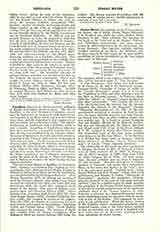

Squillace, Diocese of (SQUILLACENSIS), suffragan of Reggio, in Calabria, Southern Italy. The city of Squillace, in the civil Province of Catanzaro, stands near the Ionian Sea at the base of a hill between the two branches of the River Alessi, and is a center of the wine, olive, and silk industries; it also possesses lead and iron mines, and earthenware works. The ancient Scyllaceum, or Scylletium, had a harbor, which is now a marsh. According to Cassiodorus, who was born there and died in a monastery founded there by him, the city was established by an Athenian colony. Invasions of Saracens in the ninth and tenth centuries, a landing of the Turks in 1595, and the earthquake of 1783 caused its ruin. The diocese possesses the bodies of many saints, including: St. Achatius, martyr, in the cathedral; St. John Terrestre, abbot, a contemporary of St. Nilus in the (then Basilian) monastery of Stilo; and the holy monks Bartolomew, Nicholas, and Basil. St. Bruno established two Carthusian monasteries within the limits of the diocese, S. Maria dell’ Eremo and S. Stefano in Nemore, the latter having the less rigorous discipline.
The first known Bishop of Squillace is Gaudentius (465); Zachaeus accompanied Pope Vigilius to Constantinople (551); John, previously Bishop of Lissa, in Dalmatia, having been driven out by the barbarians, was transferred hither by St. Gregory the Great. After Bishop Demetrius (870), no bishops are mentioned until the Norman conquest, after which Count Roger erected the cathedral, into which the Latin Rite was introduced, while the Greek Rite continued much longer in the diocese. The series of bishops commences again with Theodore Mismer (1094). Other bishops were: Francesco degli Arcesi (1418-76); Cardinal Enrigo Borgia (1539); Cardinal Guglielmo Sir-Ieto (1568), who resigned in favor of his nephew, Mareello (1573), the founder of a monastery for penitent women, and famous for his erudition; Tommaso (1594) and Fabrizio Sirleto (1693); Nicola Micheli, who enlarged the seminary. The territory of Squillace contains Stilo, the ancient Consilinum, three bishops of which are known, Sabinus (495) being the earliest. The diocese contains 59 parishes, with 198 secular and 24 regular priests, 130,000 inhabitants, 5 convents of men and 1 of nuns.
U. BENIGNI

